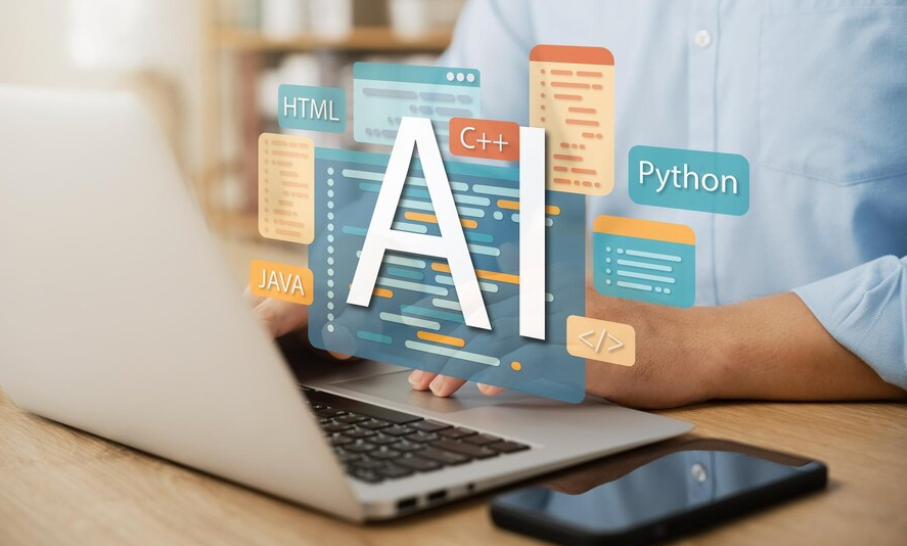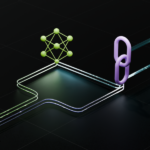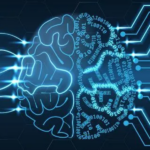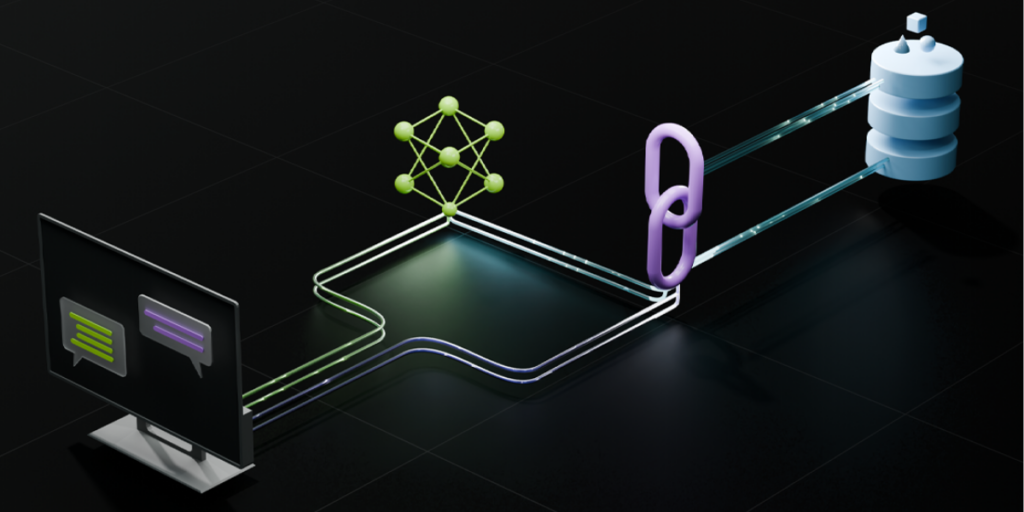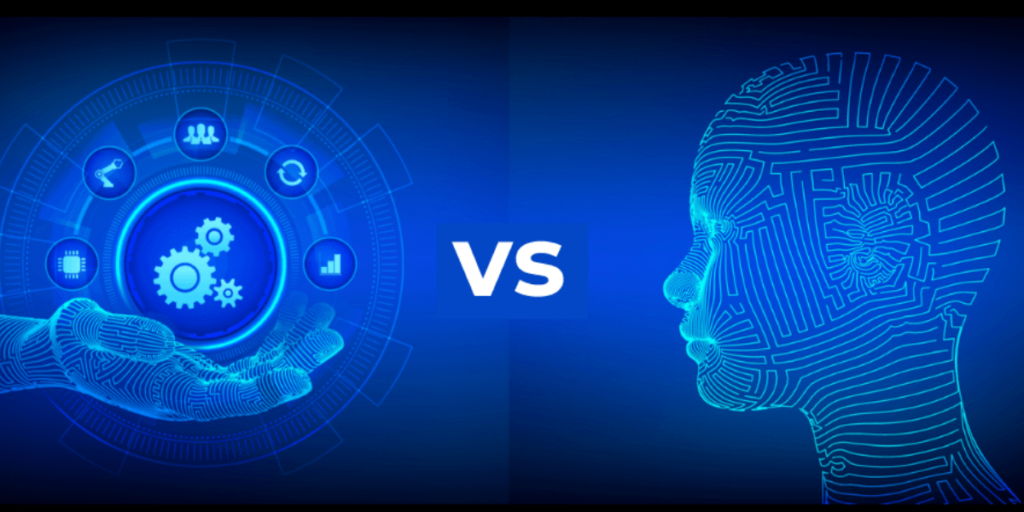Artificial Intelligence (AI) has transformed various industries, leading to better decision-making, lower costs, and increased productivity.
AI can perform tedious and lengthy tasks independently, allowing people to focus on their other tasks. It can also analyze vast quantities of data quickly and provide stakeholders with significant insight.
But AI isn’t created out of magic.
If you go through the massive databases, you’ll see that the frameworks and programming languages are part of Python’s functionality. Python is among the most used programming languages for AI development because of its extensive library ecosystem and its fast learning curve. However, other programming languages such as Java, C++, and Haskell are also essential in the creation of AI systems.
Learn more about the most popular AI programming language in depth and help you select the correct programming language to complete your AI project.
What is Generative AI?
At the highest level, the term “generative” AI refers to a type of AI model and tool designed to generate new content, including images, text, videos, or music. Generative AI development company employs techniques such as deep learning algorithms and neural networks to recognize patterns and breed new outcomes. People and organizations (including engineers and software developers) increasingly rely on generative AI tools for creating images, content, code, and much more.
What is Generative AI Used for?
There’s a chance you’ve heard about the latest artificial intelligence (AI) tools like ChatGPT or Bing. AI tools such as ChatGPT or the brand new Bing, however, there’s more to the concept of generative AI than any single framework project, application, or even.
Traditional AI machines are trained using huge amounts of data to find patterns. They’re also capable of completing specific tasks that benefit both individuals and businesses. However, generative AI takes it one step further by utilizing sophisticated systems and models to produce innovative or new outputs in the form of images or text using natural language commands.
Generative AI models and applications may be utilized to:
Text Generation
Text generation, as a discipline using AI tools, has been developing since the 1970s. More recently, AI researchers have been capable of training GANs, or generative adversarial networks (GANs), to create text that mimics human speech.
An excellent example is the OpenAI application ChatGPT, which is a trained application based on reading hundreds of books, articles, and code repositories. It can provide complete answers to natural language prompts and queries.
Image Generation
Generative AI models can generate new images using natural language prompts. Text-to-image generation is among the most well-known techniques used by the latest tools and applications. It aims to produce an image that accurately portrays a prompt’s message.
Video Generation
Generative AI models, such as Stable Diffusion, create new videos from existing ones by combining specific styles using an image or text reference. One project on GitHub, stable-diffusion-videos, provides helpful examples and tips on how to make music videos and videos that can morph between text prompts with Stable Diffusion.
- Generating Programming Code: Instead of looking through the internet or community forums for developers to find code examples or code examples, generative AI models can create new programming code by using natural language prompts. You can also write partially written code with ideas and even translate codes from one programming language into another.
This is how, at an elementary level, Copilot in GitHub operates: it uses the Codex model of OpenAI to provide code suggestions straight from an editor for developers. But, as with any other software developer tool, we advise users to read through the code before merging it into production.
- Data Generation: Generating new data, also known as synthetic data, and enhancing existing data sets is a typical use case for generative AI. This is the process of creating new data from existing data to expand the size of the data and improve machine learning models that are trained on it. It also ensures privacy, as real-time data from users isn’t used to drive models.
Synthetic data generation offers the ability to create valuable, relevant data that can be used for more than ML training. A variety of companies that offer self-driving cars, such as Cruise and Waymo, use AI-generated synthetic information to train perception systems and prepare the vehicles for situations in real life during operation.
- Language Translation: Natural-language comprehension (NLU) models paired with native AI have been gaining popularity in poor-performing translations on the fly. These kinds of tools can help businesses break down barriers to language and expand the accessibility of their clients by offering documents or support in the customer’s native language.
With the aid of complex deep learning algorithms, generative AI can comprehend the context of a text and construct linguistically similar sentences in a different language. This technique can also be applied to programming languages, such as translating a feature in Python into Java.
Benefits of Generative AI
Generative AI systems provide a lot of advantages. Let’s review some of the most significant enhancements that Generative AI allows.
Automates and Innovates Content Generation
One of the main applications businesses can find when using generative AI in content creation. Marketing teams typically spend most of their time generating new content that takes such forms as marketing material blog posts, postings on social media, and graphic design.
AI tools can aid in everything. Generative AI tools can follow instructions to create specific scenarios. For example, suppose you are planning to build an online landing page. In that case, you can instruct your AI, the text generator, to generate an introduction to your landing page that identifies your visitors’ pain points as you search for possible solutions facilitated by your product.
These tools let companies automate the process of creating content and invent. Give the AI tools a try by giving them new ideas for input. Find out how they could use your ideas to develop even more engaging original content. You could then exchange ideas to improve them before settling on an idea that can be used.
Enhances Customer Experience Through Personalization
Another method AI can use to improve business processes is personalizing customer interactions. AI can be trained to understand your company and the services you provide. When you combine this with the customer information you collect, you will be able to make your own personalized experiences with generative artificial intelligence.
For example, an online company will have information on customers’ demographics and the items they’re likely to purchase. If they can match these preferences with potential customers, these e-commerce businesses can develop AI-generated content personalized to their customers with more relevant suggestions.
This eventually leads to an enhanced customer experience since customers receive the most appropriate items.
Optimizes Product Designs
Designing products is yet another area where AI can assist businesses in improving their productivity and increasing creativity. It’s sometimes difficult to know what customers are looking for, as behavior and preferences change with time, leaving companies to scramble to remain competitive.
AI aids in the analysis of large quantities of data. AI models utilize deep learning techniques to recognize trends in markets and examine other market variables, helping companies improve their confidence in their decision-making and decrease risk. This data will provide insight into consumer behavior, which your company can utilize to make new products and improve the quality of your current offerings.
If you can determine where consumers tend to be and understand where customers’ preferences are changing, utilize AI to develop concepts. Include some of the latest problems consumers face, possible solutions, and potential modifications to your existing products to make them appealing to new consumer preferences.
Strengthens Cybersecurity Efforts
Generative AI can play a vital part in helping businesses improve their security efforts. Companies need to research vast amounts of data to find dangers, something AI tools can assist with.
While humans can analyze the data flowing into the computer networks, this process requires a long time to complete correctly. Time IT professionals can use for other projects. AI aids by reviewing those data for you and identifying patterns that aren’t typical. If something isn’t right, AI can inform your team of any potential threats to tackle, often in real time.
This strategy allows for fast detection of threats and the capability to stop malicious actors before they penetrate your systems. As cyberattacks start to use AI, this strategy is essential to keeping up with ever-changing malware that uses generative AI to generate new malware and targeted attack methods such as phishing.
Advances in Health Care Research
Generative AI helps advance healthcare research by enabling researchers to develop innovative drug concepts that would typically require extensive time and effort to create manually. For example, figuring out the structure of molecules’ proteins requires a long time—often ten years. However, AlphaFold from Google can complete the process in just a few seconds.
This capability helps researchers understand the structure of the interactions between molecules and their components, helping them create new compounds for drugs and test their efficacy.
Another area where generative AI aids in this regard is producing test data. In the past, researchers required human subjects to create test data. However, now AI can create synthetic research data from patients and create tests ahead of time to determine whether a particular drug has the chance of being successful prior to starting trials with humans.
Streamlines Business Processes
AI aids in streamlining business processes. If you can identify areas where you could automate tasks and then use AI to create information, you can reduce your staff’s workload and do more every day.
A good example is the analysis of reports. Business managers must study reports that contain information regarding their business and the market. To digest the information they receive, they must spend a significant amount of time studying the reports to gain an understanding.
One of the best things about today’s large-scale language models (LLMs) is their ability to analyze vast data to come to conclusions. Many tools let you add text files to an AI text generator to generate summaries of text. Another software enables you to chat with PDFs to speed up summarizing.
Improved Customer Service
The ability to respond quickly to customers’ issues can be a challenge when dealing with many customers. There are only so many staff members, meaning customers could wait too long to talk to someone.
Chatbots can now use generative AI technology based on data from businesses and provide personalized support using AI tools. This means the tools can learn from your customers and product information to provide individualized support to those needing assistance.
Customers can speak to your AI chatbot anytime and receive the required assistance. If the chatbot can’t resolve the issue, the customer is in touch with a human representative–helping reduce the work your team must do.
Foster’s Market Innovation
Businesses looking to establish an impact in their field can utilize the power of generative AI to assist in this process. By analyzing and analyzing large amounts of data, these generative AI tools provide insight into information that humans might not be able to discover.
For companies, this means increased market development. AI aids companies in finding new ways to grow. This includes new products, service opportunities, market trends that could be a factor, and other valuable insights.
Alongside helping companies gain insight into their markets, AI can also assist in reducing the risk associated with innovations. If you can’t comprehend your data, you might not have all the data needed to make the right decisions.
The data you gather from AI analysis can help lower the risk of developing new products since you’ll know more about consumers’ preferences. You’ll get a better understanding of whether your concept will be liked by your target customers, giving your company a competitive advantage.
Drives Digital Transformation
Generative AI could help drive digital transformation in businesses because of the information it provides to companies, which can help executives make better decisions.
For example, a construction firm might prefer to invest in something other than technology. They spend a lot of time working in the field, so they rarely use technology.
However, the situation changes when they begin using machine-learning AI algorithms to analyze their equipment and notify them when something might be wrong. AI that can predict maintenance enables companies to keep ahead of the curve and make repairs before anything goes wrong, providing businesses with a reason for investing in digital change.
Inspires Creativity
It’s hard for anyone to think of innovative concepts. Numerous products and works of art provide all the necessities needed to survive and prosper.
However, it doesn’t mean there’s nothing new to consider, and that’s what Artificial Intelligence can aid in.
Generative AI is a tool that can help users come up with new concepts. Consider AI chatbots, for instance. People using AI chatbots can communicate with these devices using natural language. This allows them to gather ideas they can apply in their pursuit of creativity. For example, a designer could outline issues to a chatbot and generate an inventory of possible products that can solve these issues.
Top Programming Languages for Generative AI
Different programming languages will be ideal, depending on the use cases. Here are some popular coding languages that are suitable for AI-related applications and technologies.
Python
Python is still a major powerhouse in the field of inductive AI due to its flexibility, ease of use, simplicity, and vast ecosystem. Its popularity is due to its simplicity of use and the robust frameworks and libraries that support advanced AI development. Python’s popularity can be explained by its easy-to-read syntax and simple readability, which make it accessible to novice and experienced developers. It is widely used in industry and academia and has created many community-based resources.
The design philosophy of Python is focused on code readability and simplicity, which allows developers to focus on solving problems instead of battling with complicated syntax.
Why Choose Python?
Comprehensive Frameworks and Libraries: Python boasts powerful libraries such as TensorFlow, PyTorch, and Keras, making it easier to create complicated AI models.
Accessibility and Readability: Python’s syntax is accessible and understandable, which makes it easy for novices and allows developers to concentrate more on solving issues.
Community is Large and the Support A lively and huge community provides extensive documentation, tutorials, and assistance, speeding up problem-solving and growth.
Versatility: Python can be used for many applications, far beyond AI, such as Web development, Data Analysis, and automation, thus making it an incredibly versatile option for developers.
Error Handling: The built-in error handling features will help you identify and fix issues arising during development. For solid generative models, the developers may need to add error-handling techniques specific to AI tasks.
Dependency Management: Managing dependencies between different Python libraries can be a challenge when working on large projects. Conflicts between versions could lead to issues with reliability. Utilizing tools such as virtual environments can help with these problems.
JavaScript (Node.js)
JavaScript, traditionally used as a web-based development tool, is now emerging as a powerful tool for developing generative AI, particularly with the introduction of Node.js. Its capability to run on both the server and client-side makes it a distinct tool within the AI developer’s toolkit.
The versatility of JavaScript is due to its widespread use in web development and its ability to run within any modern browser. This makes it ideal for deploying AI algorithms directly to users without the need for complicated backend infrastructure. Through Node.js, JavaScript extends its reach to applications that run on servers, allowing developers to build complete stack Generative AI solutions by using one language.
Why Choose JavaScript?
Affirmative and Active Community: JavaScript boasts a large and active community. This results in a vast array of tools, resources, and assistance for developers who are building intelligent AI models using JavaScript. The community encourages the ongoing improvement of libraries and frameworks, which contribute to the overall stability of JavaScript.
Real-Time Deployment, Interaction, and Integration: Libraries such as TensorFlow.js permit the development and running of generative models right within the browser. This speeds up deployment and real-time interaction with web-based AI applications, which is ideal for users interacting with the models in real time.
Streamlined Development using Node.js: Node.js allows developers to utilize JavaScript for front-end and back-end development of intelligent AI applications. This makes development easier by reducing the need to switch contexts between different languages, which could cause fewer mistakes.
Library maturity: Although JavaScript comes with libraries like TensorFlow.js and Brain.js, they could be an emerging field compared to the established libraries of other languages. This means that there are fewer resources to test and debug, which could affect the accuracy of complicated models generated. For more complex AI projects, evaluating the quality of the available JavaScript libraries and their suitability for the job is crucial.
Limitations to Performance: JavaScript has improved in performance; however, computationally intensive generative models could be limited. If your project demands the highest-performance AI tasks, it’s crucial to look at alternative methods in the JavaScript ecosystem or to look into different languages.
R
R is known for its analytical and statistical capabilities, making it an ideal tool for multi-dimensional AI, particularly in data-driven projects. R excels in statistical computing and graphics and is the perfect option for projects requiring large amounts of data manipulation and visualization. The vast collection of statistical functions and tools can be used to perform sophisticated analysis of data, which is a vital component of various AI generative AI applications.
The syntax and data handling capabilities are specifically designed for statistical analysis and provide an excellent foundation for developing AI models that heavily rely on data analysis.
Why Choose R?
Foundation of Vital Data is Solid: R is a master at handling large amounts of data. This is essential for training robust generative models since the quality of data is vital to producing accurate outputs. R’s capabilities ensure the model is trained using precise and clean data, resulting in more reliable results.
Specialized Toolset: R is a fantastic range of programs specifically designed to tackle deep and machine-learning tasks that require the field of generative AI. Tools like mlr, caret, and tensorflow offer well-tested tools to help with various aspects of modeling. These highly-tested and refined tools aid in the overall stability of the development process.
Engaged Community Support: A lively R community encourages knowledge sharing and collaboration. This leads to easily accessible help with troubleshooting, resources, and techniques for optimizing code. Through this network, developers are able to identify and fix potential problems prior to affecting the reliability of models.
Comprehensive Guideline: R is an extensive language that covers the core language and its numerous applications. This documentation gives developers precise guidance for using R’s capabilities to create intelligent AI development. The clear instructions will aid developers in avoiding mistakes and ensuring the correct implementation of their models.
Julia
Julia is a new language in generative AI well-known for its performance and ease of use in scientific computing. Its outstanding performance distinguishes Julia. It was designed to support high-performance scientific and numerical computing and is a good option for generative AI jobs requiring intense computation. Julia’s syntax is simple and intuitive, yet it also has features that support the highest level of mathematical operations and algorithmic efficiency.
Why Choose Julia?
Highly-Flexible Computing Power: Julia excels in tasks that require computational power similar to languages recognized for their speed. This guarantees efficient models and their execution, particularly for complicated computational models with large data sets. Developers can rest assured that Julia can meet the requirements of your AI projects.
Clear and Easily Maintained Codebase: Julia’s codebase is intended to be easy to use and understand. This helps reduce mistakes during development and eases code maintenance over the long term. Precise code results in more reliable models because potential problems are simpler to spot and rectify.
Advanced Generative AI Ecosystem: A thriving community of Julia libraries catering to generative AI development. Flux.jl offers a robust platform for creating neural networks. Turing.jl provides tools for probabilistic programming, which is a vital area of the field of generative AI. The libraries are updated through the Julia community, which ensures continuous reliability via bugs and enhancements.
Flexibility Through Interoperability: Julia effortlessly integrates into other programming languages. It allows developers to use the existing codebases that have been tested and well-tested tools written in various languages. By incorporating these sources, developers can increase their projects’ quality by using software with a track history.
C++
C++ is a popular language well-known for its efficiency in performance and control over system resources, making it an excellent option for generative AI applications. C++ offers unparalleled efficiency and low-level management of memory essential for applications that require high-performance and optimized resource use. The ability to run complex algorithms fast and the fine-grained control of hardware resources makes it ideal for developing generative AI models that require handling large amounts of data or real-time calculations.
Why Choose C++?
Efficiency and speed: C++ offers unbeatable efficiency and control of system resources, which is vital for high-performance AI applications.
Low-Level Memory Management: Finely-tuned control over memory management assures efficient use of hardware resources.
Robust Libraries: Frameworks such as TensorFlow and Caffe provide complete tools for creating and deploying advanced AI models.
Widely Used in Industry: C++ is widely used in industrial applications, specifically where resource optimization and performance are crucial.
Conclusion
The selection of the correct programming language is vital to the success of generative AI projects. All languages have distinct strengths and are suitable for various tasks. When programmers understand the strengths and capabilities of these different languages, they can make informed choices aligned with their specific project’s requirements. Making the right decision can help improve the efficiency of the development process, higher performance, and, eventually, more effective and innovative AI solutions.
At A3Logics, we specialize in Generative AI development services, using our vast experience to provide cutting-edge solutions tailored to your needs. Look at our Generative AI section to discover how we can help with future projects. With A3Logics, you can be confident that your innovative AI products will be based on a solid foundation of the top techniques and tools in the field.

